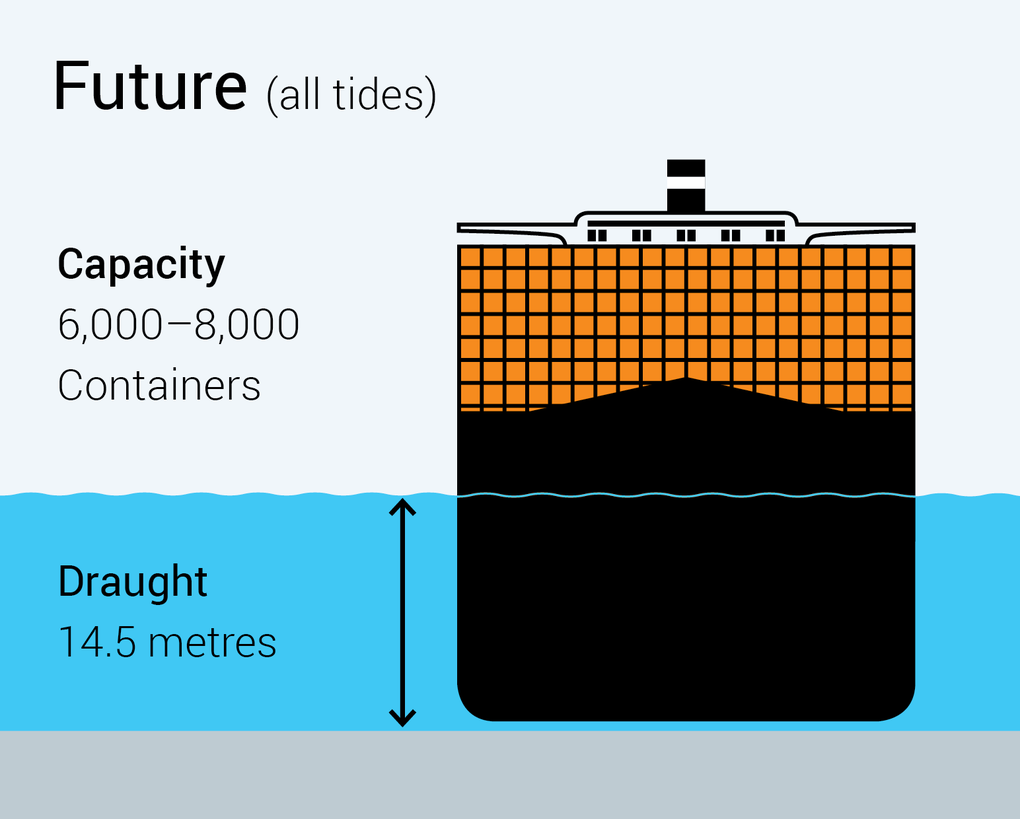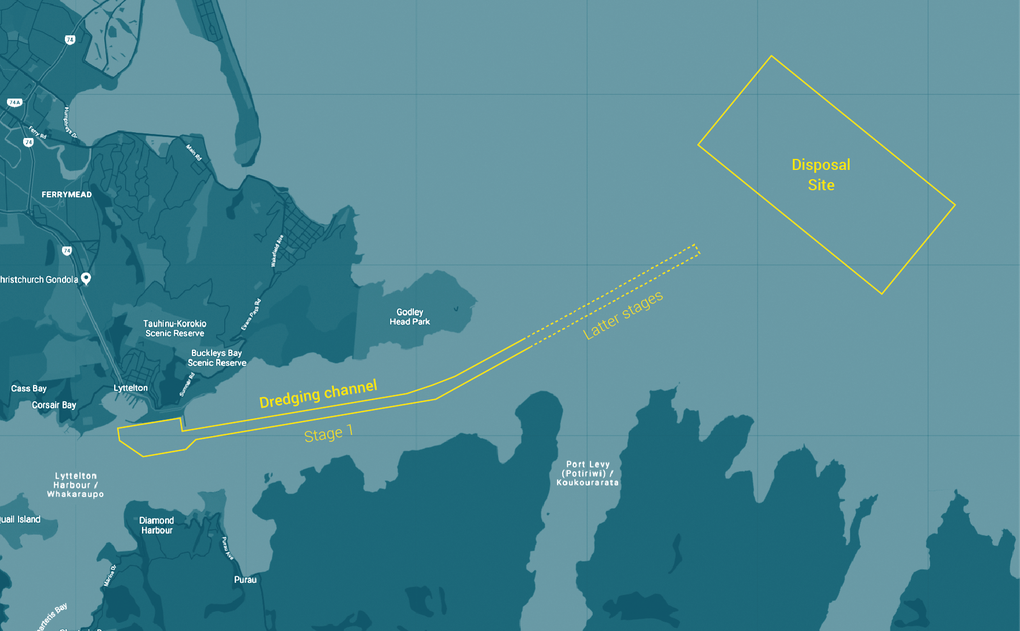Channel dredging is done with what’s called a “Trailer Suction Hopper Dredge”. This essentially works like a vacuum cleaner, sucking up sediment from the seafloor into the hopper of the dredge vessel. Once the hopper is full, the dredge vessel travels to the offshore spoil disposal site and evenly distributes the sediment across the site.
Container ships have doubled in size over the last 10 years and the trend toward bigger ships continues. Using the Fairway dredge, in 2018, we enlarged the existing shipping channel to provide access to larger ships and support Lyttelton’s future as the South Island’s major international trade gateway.
The channel now allows all-tide access for ships with a 14.5m draught. This represents an increase of up to 3000 more containers per vessel – or 144 million more bananas per ship!

Channel dredging
Water quality
The most obvious environmental change people may have noticed were sediment plumes behind the dredge vessel. These looked like a trail of cloudy patches in the water behind the dredge. The environmental effects of the plumes were evaluated during the consent process. It was found any environmental effects would be minimal and short term as the ecosystem is used to naturally occurring fluctuations in water clarity.
Our instruments continuously measure the amount of sediment in the water to ensure it remains within acceptable levels set by the consent.
Monitoring programme
Our environmental monitoring programme is the most extensive ever undertaken for a dredge project in New Zealand. We are continuously assessing a wide range of environmental factors and adapting dredging operations in response, to ensure environmental effects are minimised.
Fish and marine mammals
Small seafloor organisms tend to have short lifecycles and can recolonise quickly after disturbance. Interestingly, dolphins may even take advantage of the sediment plumes, using their sonar to hunt for fish ‘under cover’. The dredge vessel will have designated marine mammal observers onboard. Their job is to ensure the dredge avoids marine mammals, and will also record the mammals they see and their behaviour to aid wider research.
Beach and shore
Shorelines are being regularly monitored for any changes to sandy and rocky beach environments. We are also monitoring the marine ecology in the harbour and along the coastlines.
In the first stage the existing shipping channel was lengthened by approximately 2.5 km, widened by 20 metres and deepened by up to 2 metres. The dredged sediment was relocated to a designated 2.5 x 5 km spoil ground located approximately 5 km off Godley Head.

Realtime Monitoring
Learn more about maintenance dredging and monitoring here.
Learn more about turbidity map monitoring while maintenance dredging is underway here.
Key Facts
Project completed
Project duration
Sediment dredged